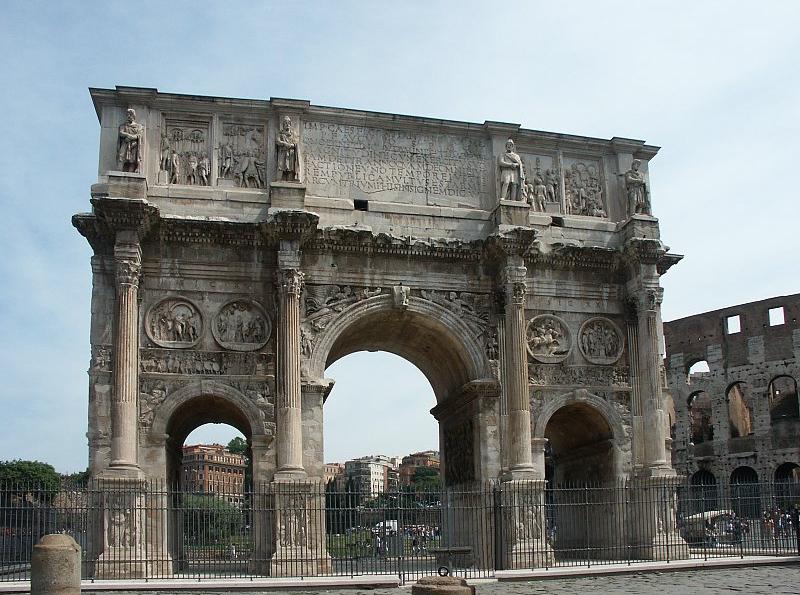Rome
As the Roman Empire was coming to an end, Christianity in Rome was on the rise with the strong support of Emperor Constantine, who ruled between 306 and 337 AD, and who not only enabled the growth of Christianity but was also determined to create a Christian culture in Rome and all of Italy. Just as the Church often used materials and buildings from the ancient Roman world for its own use, as did Constantine. This reuse of ancient material can be observed quite clearly in the Arch of Constantine, which was built in 312 AD to commemorate Constantine’s victory at the Battle of Milvian Bridge and the defeat of Maxentius. These triumphal arches were popular during the Empire as a way to commemorate an event and often to welcome triumphal processions. Though it honored Constantine , much of this triumphal arch contains earlier works, particularly from monuments for emperors that Constantine considered to be good and wanted to be associated with, including Trajan, Hadrian, and Marcus Aurelius. For example, at the top of the arch, Dacian prisoners can be found, which were made during the time of Trajan. The arch remains the largest Roman triumphal arch today.
Emperor Constantine
January 14, 2019
|
Rome, Italy
As the Roman Empire was coming to an end, Christianity in Rome was on the rise with the strong support of Emperor Constantine, who ruled between 306 and 337 AD, and who not only enabled the growth of Christianity but was also determined to create a Christian culture in Rome and all of Italy. Just as the Church often used materials and buildings from the ancient Roman world for its own use, as did Constantine. This reuse of ancient material can be observed quite clearly in the Arch of Constantine, which was built in 312 AD to commemorate Constantine’s victory at the Battle of Milvian Bridge and the defeat of Maxentius. These triumphal arches were popular during the Empire as a way to commemorate an event and often to welcome triumphal processions. Though it honored Constantine , much of this triumphal arch contains earlier works, particularly from monuments for emperors that Constantine considered to be good and wanted to be associated with, including Trajan, Hadrian, and Marcus Aurelius. For example, at the top of the arch, Dacian prisoners can be found, which were made during the time of Trajan. The arch remains the largest Roman triumphal arch today.

Share your travel adventures like this!
Create your own travel blog in one step
Share with friends and family to follow your journey
Easy set up, no technical knowledge needed and unlimited storage!